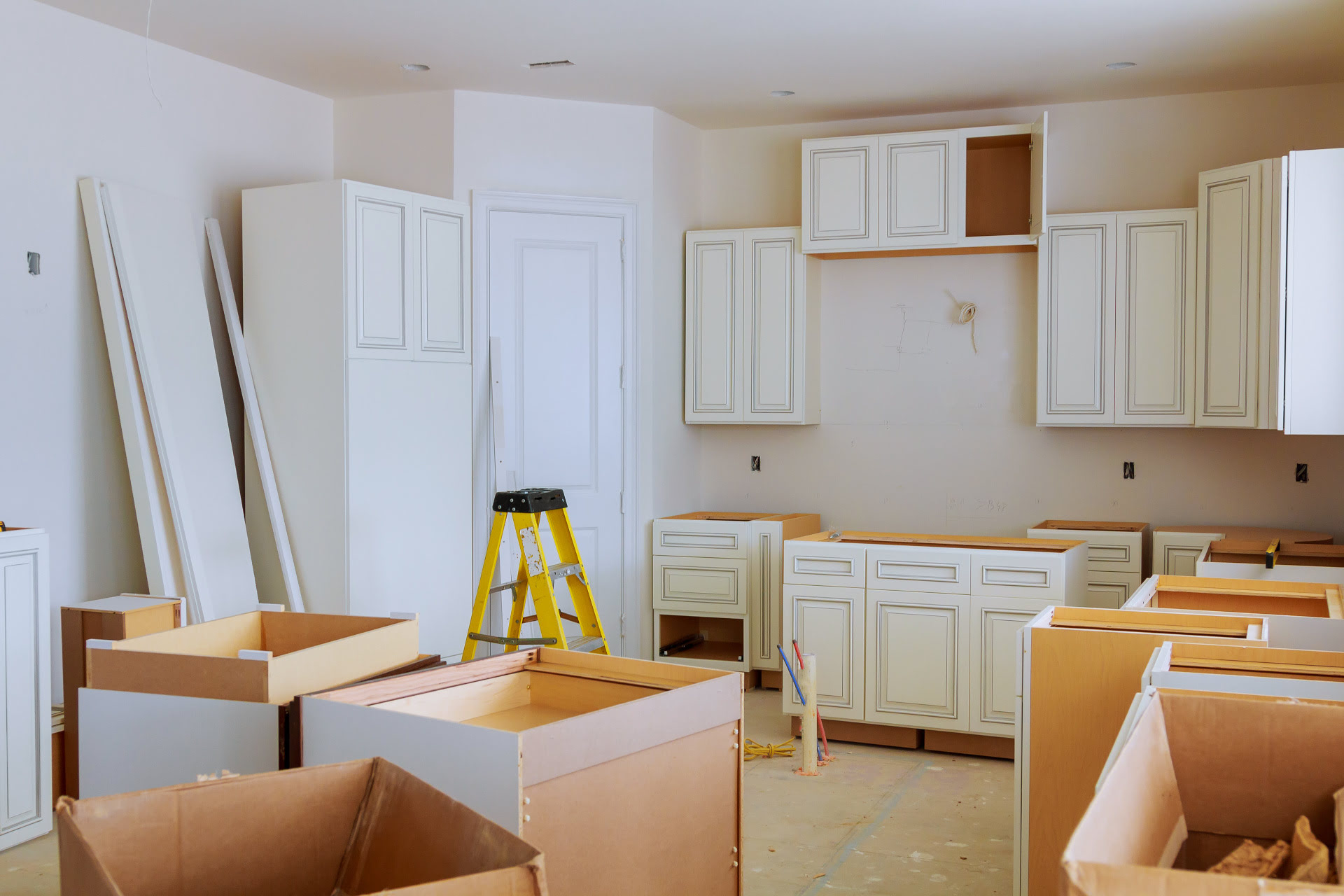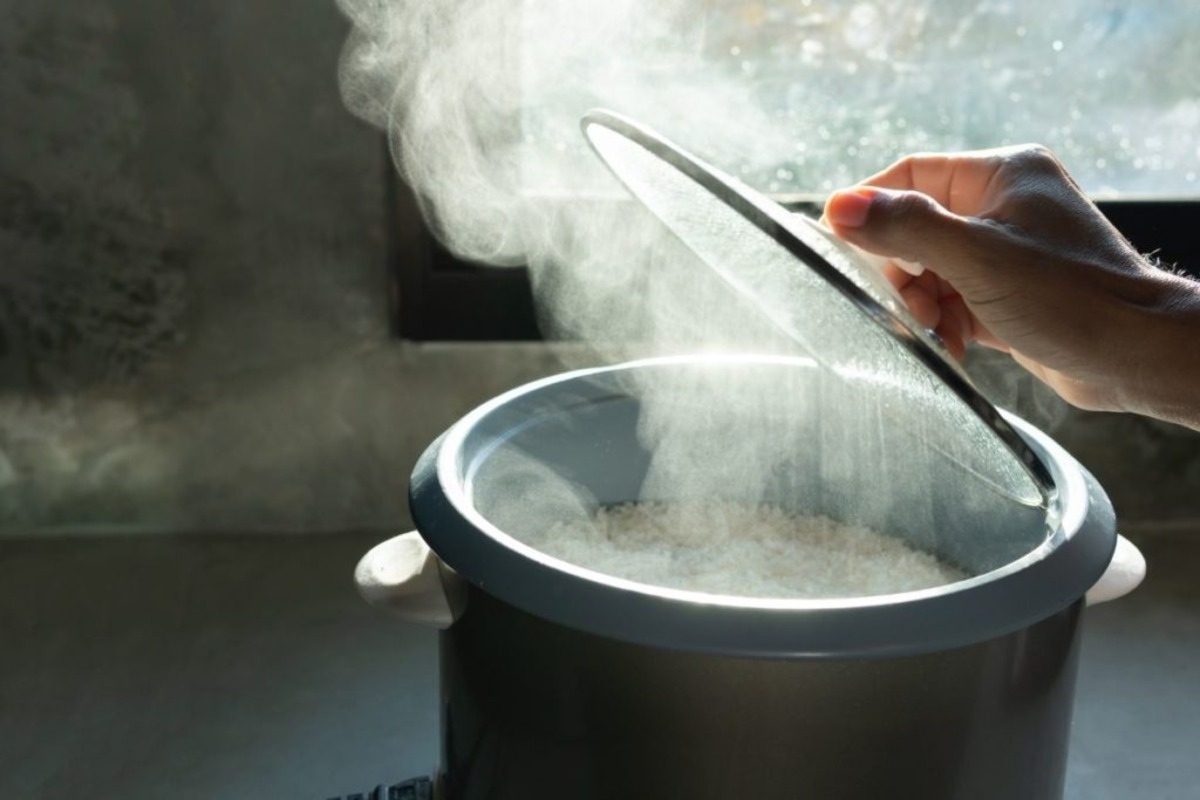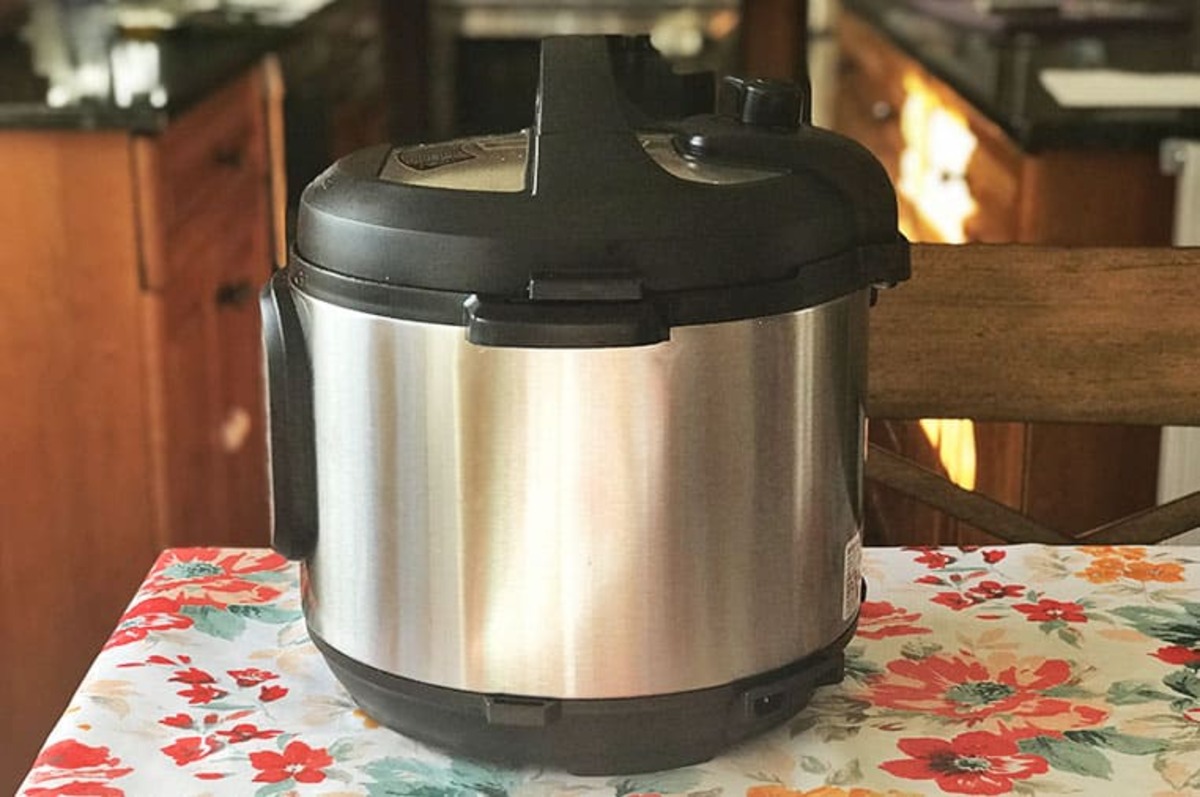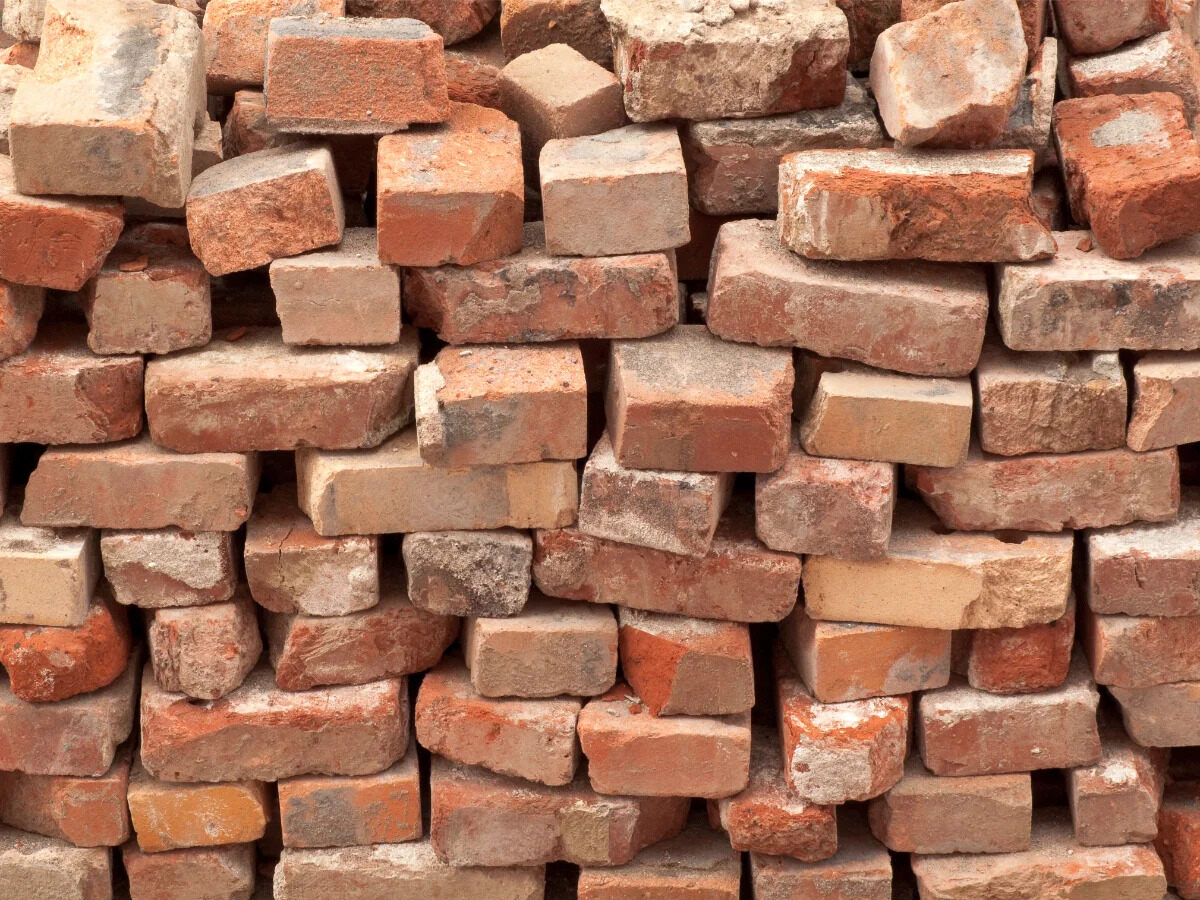Home>diy>Home Improvement>How Long Does A Kitchen Renovation Take


Home Improvement
How Long Does A Kitchen Renovation Take
Modified: October 28, 2024
Transform your kitchen with a home improvement project. Discover the timeline for a kitchen renovation and get your dream space in no time.
(Many of the links in this article redirect to a specific reviewed product. Your purchase of these products through affiliate links helps to generate commission for Storables.com, at no extra cost. Learn more)
Introduction
A kitchen renovation is an exciting project that can transform your home. Whether you’re looking to update your kitchen’s style, improve functionality, or increase property value, a well-executed renovation can make a significant impact. However, one question that often arises when starting a kitchen renovation is, “How long will it take?”
The duration of a kitchen renovation can vary depending on several factors. It’s important to understand these factors and plan accordingly to ensure a smooth and efficient renovation process. In this article, we will explore the different stages of a kitchen renovation and discuss the factors that can affect the overall timeline.
Before we dive into the specifics, it’s essential to emphasize the importance of thorough planning. Proper planning can save you time and help you avoid unnecessary delays. Take the time to envision your ideal kitchen, set a realistic budget, and create a detailed plan. Planning will help you stay on track throughout the renovation process.
Now, let’s dive into the factors that can affect the duration of a kitchen renovation.
Key Takeaways:
- Proper planning, understanding factors affecting the timeline, and hiring professionals are crucial for a successful kitchen renovation. Embrace the journey and look forward to enjoying your newly renovated kitchen for years to come.
- The various stages of a kitchen renovation, from planning to final touches, play vital roles in transforming your kitchen. Each stage requires attention to detail and careful execution to achieve a beautiful, functional space.
Factors Affecting the Duration of a Kitchen Renovation
Several factors can influence the duration of a kitchen renovation. Understanding these factors will help you have realistic expectations and plan your renovation timeline accordingly.
- Size and Complexity: The size and complexity of your kitchen renovation project will have a direct impact on the timeline. A small-scale remodel, such as updating the countertops and cabinets, can typically be completed faster than a major renovation that involves structural changes, electrical and plumbing work, and extensive customization.
- Scope of Work: The scope of work refers to the specific tasks involved in your renovation. If you’re only focusing on cosmetic upgrades like painting and replacing fixtures, the timeline will be shorter compared to a project that requires extensive demolition, rewiring, and plumbing rerouting.
- Permits and Approvals: Depending on your location and the nature of the renovation, you may need to obtain permits and approvals from local authorities. The time required for this process can vary, so it’s important to factor it into your renovation timeline.
- Contractor Availability: The availability of your chosen contractor is another crucial factor. Reliable and reputable contractors are often in high demand, so it’s important to book their services well in advance to ensure they can accommodate your project within your desired timeline.
- Product Selection and Delivery: The selection and availability of materials, fixtures, and appliances can also impact the duration of your renovation. If you choose products that are readily available and have a short delivery time, it won’t cause significant delays. However, if you opt for custom-made or specialty items, the delivery time may be longer, potentially impacting the overall project timeline.
- Unforeseen Issues: Renovations often uncover unexpected challenges such as hidden structural problems, outdated wiring, or plumbing issues. Dealing with these unforeseen issues can add time to the renovation process as they need to be addressed before continuing with the project.
- Seasonal Considerations: The time of year can also affect the duration of a kitchen renovation. Certain seasons, such as the summer, are peak periods for renovation projects. This increased demand may result in longer lead times for contractors and suppliers.
Keep these factors in mind when planning your kitchen renovation to set realistic expectations and ensure a smooth and efficient process.
Planning Phase
The planning phase is a crucial step in any kitchen renovation project. Taking the time to carefully plan and prepare will set the foundation for a successful renovation and help keep the project on track. During the planning phase, you will make key decisions and establish a clear roadmap for the renovation process.
Start by assessing your needs and identifying your goals for the renovation. Consider your lifestyle, cooking habits, and the functionality you desire in your new kitchen. This will guide your decision-making process when it comes to layout, storage solutions, and appliance selection.
Next, establish a realistic budget for your renovation. Determine how much you are willing to invest and allocate funds accordingly to different aspects of the project, such as materials, labor, and contingency expenses. Research the average costs of various renovation elements to get a better understanding of what you can afford.
Once you have a clear vision and budget, it’s time to start gathering inspiration and ideas. Browse through home improvement magazines, visit kitchen showrooms, and explore online platforms, such as Pinterest and Houzz, to gather inspiration for your dream kitchen. Create a mood board or save images that resonate with your style and preferences.
After gathering inspiration, it’s time to work with a professional. Hire an experienced kitchen designer or contractor who can provide expert guidance and assist with translating your vision into a feasible plan. Collaborate closely with them and communicate your expectations, budget, and timeline. They will help you create detailed drawings, select materials, and create a comprehensive project timeline.
During the planning phase, also consider any additional services you may need, such as hiring an architect or structural engineer for major structural changes. Ensure that you obtain the necessary permits and approvals from local authorities, as these can take time.
By carefully planning and preparing during this phase, you’ll have a solid foundation for a successful kitchen renovation. It will help ensure that you have a clear vision, realistic budget, and a well-defined timeline, making the subsequent stages of the renovation more manageable and efficient.
Demolition Stage
Once the planning phase is complete, it’s time to move on to the demolition stage of your kitchen renovation. This stage involves removing the existing fixtures, cabinets, countertops, and any other elements that are being replaced or updated.
Demolition typically starts with disconnecting and removing appliances, such as the refrigerator, stove, and dishwasher. It’s essential to turn off the water and electricity supply before removing these appliances to ensure safety. If there are any gas lines connected to appliances, it’s important to hire a professional to handle the disconnection.
Next, the cabinets and countertops are taken down. This process may require tools such as crowbars, hammers, and drills to remove the fasteners and dismantle the components. Care should be taken to avoid damaging the walls or the subfloor during the removal process.
Once the cabinets and countertops are removed, the flooring can be addressed. Depending on the renovation plans, the existing flooring may need to be ripped out to make way for new flooring materials. This can involve removing tiles, vinyl, or laminate flooring. If there are layers of subflooring, those may also need to be removed to create a level surface for the new flooring.
Throughout the demolition stage, it’s important to have proper safety measures in place. Use protective gear, such as gloves and goggles, to prevent injuries from flying debris. Ensure good ventilation in the space to minimize the spread of dust and particles.
Demolition is typically a noisy and messy process, so it’s important to prepare accordingly. Clear the space of any valuable or delicate items and cover nearby furniture and fixtures with drop cloths to protect them from dust and debris. Consider sealing off the work area with plastic sheets to contain the mess.
It’s crucial to hire experienced professionals for the demolition stage, especially if it involves structural changes. They will have the necessary tools and expertise to safely and efficiently handle the removal process, minimizing the risk of damage and ensuring that everything is prepared for the next phase of the renovation.
Electrical and Plumbing Work
During a kitchen renovation, electrical and plumbing work plays a vital role in ensuring the functionality and safety of the space. This stage involves making necessary updates or changes to the electrical system and plumbing connections to accommodate the new design and appliances.
Electrical work involves installing new wiring, outlets, switches, and lighting fixtures. It may also include upgrading the electrical panel to support the increased electrical load of modern appliances. Depending on the complexity of the renovation, this stage may require the expertise of a licensed electrician.
Before beginning any electrical work, it’s important to consult local building codes and regulations to ensure compliance and obtain any necessary permits. Safety should always be a top priority, and all work should be done by a qualified professional to prevent electrical hazards and ensure proper functionality.
Plumbing work involves updating or rerouting pipes, drains, and water supply lines to accommodate new sinks, faucets, and appliances. This may include relocating plumbing fixtures due to changes in the kitchen layout. In some cases, a licensed plumber may be required to handle complex plumbing tasks.
It’s essential to plan the plumbing changes according to the new kitchen design and take into account any specific requirements of the appliances being installed. This ensures proper water flow, drainage, and efficient operation of the plumbing system.
Similar to electrical work, plumbing work must also comply with local codes and regulations. It’s important to obtain the necessary permits and have the work inspected to ensure compliance with safety standards.
During the electrical and plumbing stage, it’s expected that the kitchen will be unavailable for use. This is due to the necessary disruptions caused by rerouting wires and pipes. Ensure you have alternative arrangements in place for meals and daily activities during this phase.
By hiring licensed professionals for the electrical and plumbing work, you can have peace of mind knowing that your kitchen renovation is being handled by experts who will ensure the safety, functionality, and compliance of the electrical and plumbing systems in your newly renovated kitchen.
A kitchen renovation can take anywhere from 6-12 weeks, depending on the scope of the project and any unexpected issues that may arise. It’s important to plan for potential delays and work with a reliable contractor to ensure a smooth process.
Structural Changes
Structural changes are a significant aspect of a kitchen renovation, especially if you’re looking to alter the layout or expand the space. These changes involve modifying load-bearing walls, adding or removing walls, or creating openings to improve the flow and functionality of the kitchen.
Before embarking on any structural changes, it’s essential to consult with a qualified professional, such as a structural engineer or architect. They will assess the existing structure, determine if any changes are feasible, and develop a plan to ensure the structural integrity of your home.
When it comes to structural changes, it’s crucial to obtain the necessary permits and approvals from local authorities. These changes can have an impact on the overall stability of the building, so it’s important to follow the proper procedures to ensure compliance with building codes and regulations.
Structural changes may involve removing load-bearing walls, which requires redistributing the weight and support through the use of beams, columns, or other structural elements. This is not a DIY task and should only be carried out by experienced professionals to ensure safety.
If you’re considering removing or adding walls, it’s important to consider the impact on electrical and plumbing systems. You may need to reroute wiring, pipes, and outlets to accommodate the new layout. Collaborating with professionals in both the construction and electrical/plumbing fields will ensure a cohesive plan and seamless execution.
In some cases, structural changes may also involve raising or lowering ceilings or modifying floor levels to create visual interest or a more spacious feel. These changes require careful planning to ensure they do not compromise the structural integrity of the building.
Structural changes often add complexity to a kitchen renovation project, and therefore, they can impact the overall timeline. It’s important to account for any potential delays, as unforeseen complications may arise during this stage. Patience and flexibility are key during structural changes, as the end result will be a transformed and customized kitchen that meets your unique needs and desires.
Installation of Cabinets and Countertops
The installation of cabinets and countertops is a critical stage in a kitchen renovation, as these elements not only enhance the aesthetics but also provide functional storage and workspace. Proper installation ensures that they are secure, level, and aligned with the overall design of the kitchen.
Before the installation begins, it’s important to ensure that the space is prepared and ready for the cabinets and countertops. This includes making sure that the walls are smooth and clean, and any necessary electrical or plumbing work has been completed. It’s also essential to double-check the measurements and confirm that the cabinets and countertops are the correct size and style.
Cabinet installation starts with marking the layout on the walls, using a combination of measurements and the predetermined design plan. The mounting brackets or rails are then installed securely on the walls, providing a stable foundation for the cabinets. Each cabinet is carefully lifted into place, leveled, and secured to the mounting brackets. This process continues until all the cabinets are installed according to the design plan.
Once the cabinets are in place, attention turns to the installation of countertops. This step involves carefully positioning and securing the countertops on top of the cabinets. The countertops are aligned and leveled to ensure a seamless and uniform appearance. During this stage, any necessary cutouts for sinks, cooktops, or other appliances are made, ensuring a proper fit.
Both cabinet and countertop installation are precise tasks that require the expertise of skilled professionals. It’s recommended to hire experienced installers who have the necessary equipment and knowledge to handle the work accurately and efficiently.
After the installation is complete, a final inspection is carried out to ensure that all cabinets and countertops are level, secure, and aligned properly. Any necessary adjustments are made to ensure a flawless finish.
It’s worth noting that the installation of cabinets and countertops can be a time-consuming process depending on the complexity of the design and the materials used. It’s important to factor in sufficient time for this stage in your renovation timeline to ensure quality workmanship.
By hiring professionals and paying attention to detail during the installation of cabinets and countertops, you can achieve a beautiful and functional kitchen that meets your needs and enhances the overall appeal of your home.
Flooring and Painting
The flooring and painting stages are crucial components of a kitchen renovation that add the final touches and tie the whole design together. These elements not only enhance the aesthetics of the space but also contribute to its functionality and durability.
When it comes to flooring, there are various options to consider, such as tiles, hardwood, laminate, vinyl, or even eco-friendly alternatives like bamboo or cork. The choice of flooring material will depend on your personal preference, budget, and the overall style of the kitchen. During this stage, the old flooring is removed, and the new flooring material is carefully installed, ensuring proper alignment, leveling, and sealing where necessary.
It’s important to plan the flooring installation after the cabinets and countertops are in place to avoid any damage or scratches during the installation process. If possible, protect the cabinets and countertops by covering them with drop cloths while the flooring is being installed.
Once the flooring is complete, the painting stage begins. Painting the walls, ceiling, and trim adds a fresh and vibrant look to the kitchen. It allows you to fully customize the space and create the desired ambiance. Whether you opt for a bold color, a neutral tone, or an accent wall, painting can dramatically transform the look and feel of the kitchen.
Before painting, ensure the walls are properly prepared. This involves cleaning any dirt or grease, filling any holes or imperfections, and sanding the surfaces to create a smooth finish. It’s also important to use quality paint appropriate for kitchen use, as this area is prone to moisture and stains.
Consider the lighting in the kitchen when choosing paint colors, as it can significantly impact how the colors appear. Natural light will enhance and reflect colors differently compared to artificial lighting. It’s a good idea to test paint samples on small sections of the walls to see how they look under different lighting conditions before committing to a color.
During the flooring and painting stages, it’s essential to protect the newly installed flooring and existing cabinets and countertops from any paint spills or drips. Cover the flooring with drop cloths and use painter’s tape to mask off cabinets and countertops to ensure a clean and professional finish.
Proper installation of flooring and skillful painting techniques will ensure that your kitchen renovation achieves a cohesive and visually appealing look. These final touches bring the design vision to life and elevate the overall aesthetic of the space.
Final Touches and Cleanup
The final touches and cleanup stage of a kitchen renovation are the finishing steps that bring the project to completion. These steps involve adding the last details to the space and ensuring that everything is clean and tidy.
One of the important final touches is installing the hardware on cabinets and drawers. Choose handles, knobs, or pulls that complement the overall design and style of your kitchen. This small detail can make a big difference in the final look and functionality of your cabinets.
Once the hardware is installed, it’s time to address any additional installations or fixtures. This may include pendant lights, under-cabinet lighting, backsplash tiles, or any other decorative elements you have chosen for your kitchen. Pay attention to proper installation and ensure that all fixtures are aligned and securely fastened.
After the final installations, it’s crucial to thoroughly clean the kitchen. Dust, debris, and leftover materials from the renovation process should be removed from all surfaces, including cabinets, countertops, flooring, and appliances. Wipe down all surfaces with appropriate cleaning products to ensure a clean and sanitary space.
During cleanup, pay attention to hard-to-reach areas, such as corners, crevices, and grout lines, to ensure a thorough cleaning. Don’t forget to clean the windows and remove any protective coverings you may have used during the renovation process.
Once everything is clean, take a moment to inspect the entire kitchen and make sure that all elements are in place and functioning properly. Double-check that all cabinets and drawers open and close smoothly, appliances are properly connected and working, and there are no visible defects or damage.
Finally, take the time to organize and arrange your kitchen according to your preferences. Unpack and organize your kitchen essentials, such as cookware, utensils, and pantry items, in a way that optimizes functionality and accessibility. Consider using storage solutions, such as drawer dividers and cabinet organizers, to maximize space and keep everything in order.
The final touches and cleanup stage is an opportunity to put the finishing touches on your newly renovated kitchen. Taking the time and effort to ensure that everything is clean, organized, and functioning properly will allow you to fully enjoy and appreciate your beautiful, functional, and refreshed kitchen space.
Read more: How Long Does Plumbing Take
Conclusion
A kitchen renovation is a significant undertaking that can breathe new life into your home. While the duration of a kitchen renovation can vary depending on several factors, proper planning, execution, and attention to detail can help ensure a smooth and efficient process.
Throughout the renovation journey, it’s important to consider factors that can affect the timeline, such as the size and complexity of the project, the scope of work, contractor availability, and the selection and delivery of materials. By understanding these factors and planning accordingly, you can set realistic expectations and avoid unnecessary delays.
The various stages of a kitchen renovation, from the planning phase to the final touches and cleanup, each play a vital role in transforming your kitchen. The planning phase allows you to envision your ideal kitchen, set a budget, and create a detailed plan. The demolition stage clears the way for new changes, while the electrical and plumbing work ensures the functionality and safety of the space.
Structural changes can create a layout that better suits your needs, while the installation of cabinets and countertops provides both style and storage. The flooring and painting stages add the final aesthetic touches, and proper cleanup ensures a clean and tidy space for you to enjoy.
Ultimately, a successful kitchen renovation not only enhances the appearance and functionality of the space but also adds value to your home. It’s an opportunity to create a kitchen that reflects your personal style and meets the unique needs of your household.
Remember to hire professionals when necessary, consult building codes and regulations, and communicate your expectations with your chosen contractors. By doing so, you can navigate through the renovation process with confidence and achieve the kitchen of your dreams.
With careful planning, attention to detail, and the right team, your kitchen renovation can be a rewarding and transformative experience. So, embrace the journey and look forward to enjoying your newly renovated kitchen for years to come.
Frequently Asked Questions about How Long Does A Kitchen Renovation Take
Was this page helpful?
At Storables.com, we guarantee accurate and reliable information. Our content, validated by Expert Board Contributors, is crafted following stringent Editorial Policies. We're committed to providing you with well-researched, expert-backed insights for all your informational needs.














0 thoughts on “How Long Does A Kitchen Renovation Take”